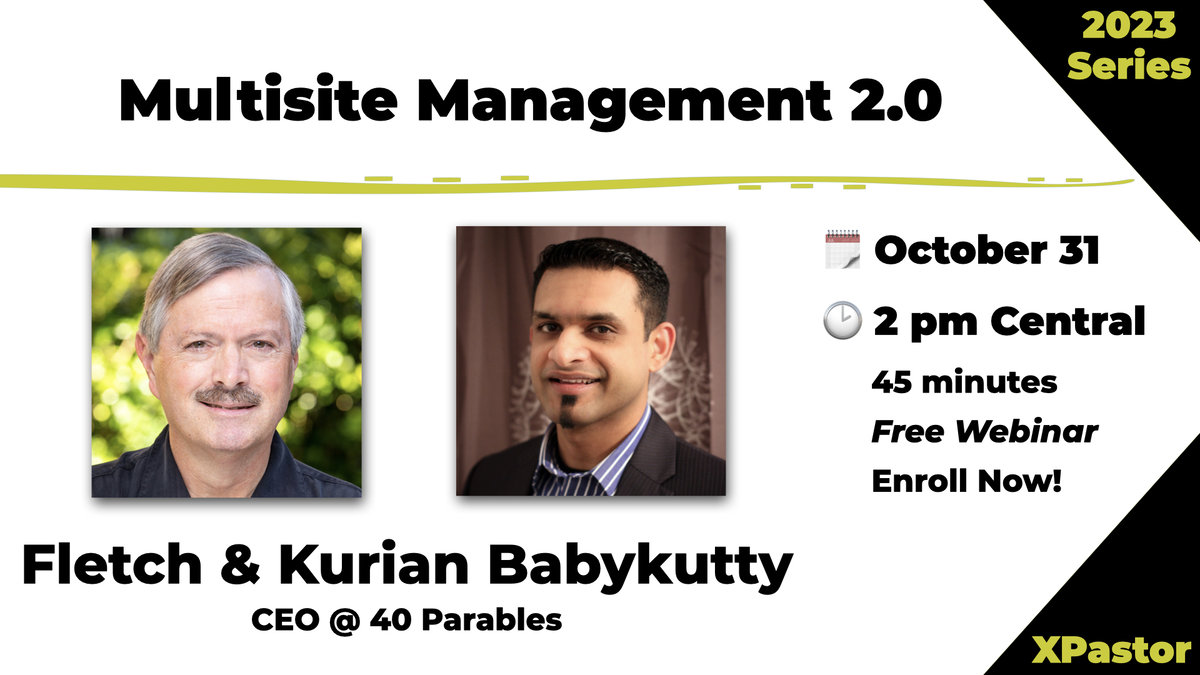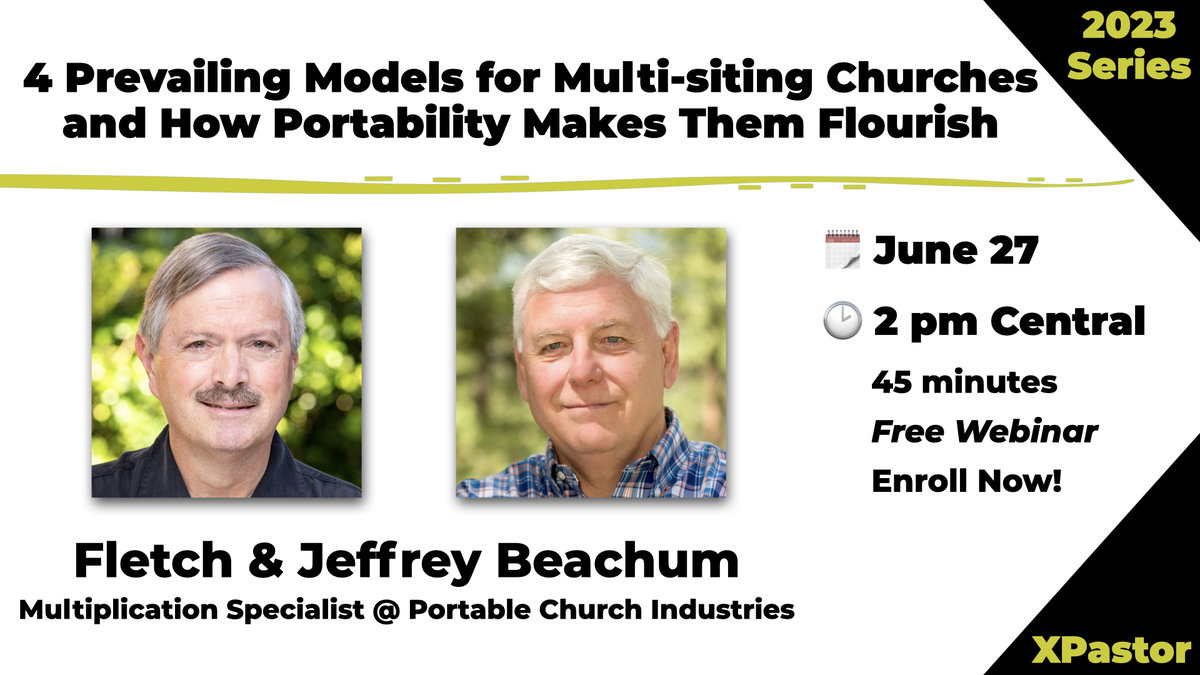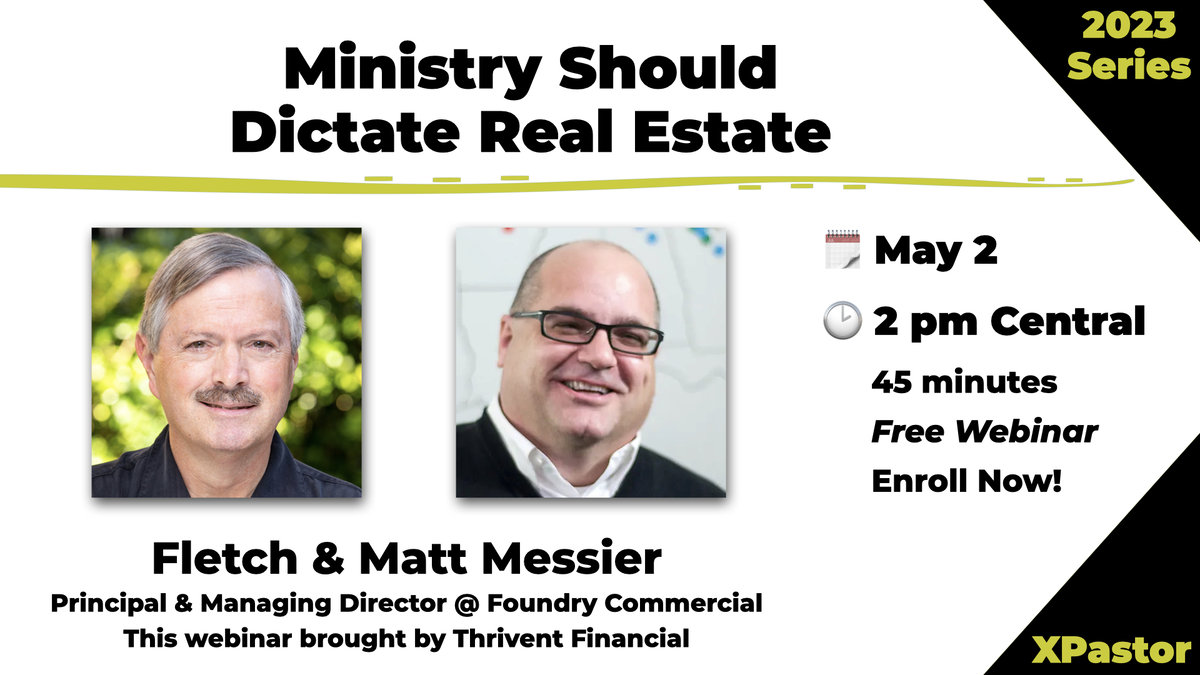The excitement of seeing God bring more people to the doors of the church—as He works in the hearts and lives of our neighbors and friends—can also bring challenges. The reality of physical space—worship center seats, parking spaces, and nursery/children’s space—can often become a growth constraint. The old saying, “You can only fit so much turtle in the shell” rings true for our churches today. People will only tolerate so many laps around the parking lot looking for a parking space, followed by the frustrations of entering a congested lobby, waiting in line at the restroom, and squeezing into a seat at the back of the worship center. Many churches have responded to this growing need by adding worship services (Saturday night, Sunday night and/or mid-week services) only to discover that these additional worship hours tax their already stretched staff without providing for a viable long-term outlet for church growth. Whether you are located in the heart of the Bible belt or on the coastal extremes, churches are discovering that most people prefer to have “church” during some portion of a three-hour block on Sunday morning.
The reality of this paradigm is causing many churches to rethink their philosophy as it relates to facility/campus expansion plans. Many are wrestling with the question of multi-site vs. multi-venue as an outlet for additional growth.
Philosophically, both options present unique opportunities as best summarized by Larry Osborne, a Senior Pastor of North Coast Church. “Multisite is a way to expand geographically. It also allows a church to go to people rather than build even bigger buildings that people have to drive farther and farther to get to. Multi-venue is a way to expand demographically. The word of God cuts across all demographics, worship styles, and external differences that set churches apart. By offering venues as diverse in worship and ambience as our Country Gospel, Traditions, and Edge venues, we are able to reach a much broader demographic than we ever would have with a one-size-fits-all (or blended) service.”
With many “options” come many “opinions,” even amongst executive leadership teams and elder groups with a single-minded vision. There is often robust dialogue in regards to which is “better” or “best” as it relates to facilitating continued ministry growth. The following story highlights one church’s journey as the executive leadership team and elder group utilized scenario analysis modeling to review multiple growth options (multisite vs. multi-venue). Reviewing the key factors led to the ultimate decision to go with multi-venue on the main campus rather than starting a second multisite campus. This story is based upon the actual events and statistics; however, the name of the church has been changed for the purpose of this writing.
Background
Spring Valley Church (SVC), located in the “buckle” of the Bible belt, has seen continuous growth. The church started in the late 1980’s with less than 100 people. Today, on a typical Sunday, SVC has over 4,100 in worship attendance across four morning worship services (8:30, 10:00, 11:30 and an 11:30 Spanish-speaking service), with the largest service attracting nearly 1,800 at the 10:00 service. SVC provides a traditional Sunday morning education experience, providing lifegroups for all ages (birth-adults), with a total education attendance of 2,600+ across all three hours. SVC’s main campus currently consists of 52 acres, 17 of which remain undeveloped, and facilitates over 1,700+ parking spaces. Multiple buildings on campus provide ministry spaces, including a 2,180 seat Worship Center, 100,000+ square feet of education space (classrooms), a gymnasium and a 20,600 square feet administration building. In addition to the weekend church functions, SVC has developed a thriving private Christian school that facilitates over 600 students, birth through grade 12.
The Questions
Steady growth has led the senior leadership team and elders to discuss how to best facilitate future growth as SVC continues to serve the local community. With one satellite location already providing a successful avenue for continued growth, some in the leadership circle believed future growth could best be facilitated through the addition of a second satellite campus. For others in the leadership circle, discussion centered on the possibility of maximizing the current main campuses 17+ undeveloped acres. As discussions continued, it became apparent that either option could be successful. However, questions remained as to which option provided for the best stewardship of resources.
In addition to the overall decision of which avenue to pursue—a second multisite campus or maximizing the 17+ acres of undeveloped land at the main campus—each avenue provided numerous questions that needed to be addressed. If we choose to add a satellite campus, we could start meeting in a rented space (school, movie theater, etc.) However, our history has shown that in order to have success with the satellite campus as a viable growth outlet to the main campus, the satellite would need to provide quality education spaces (classrooms, assembly spaces, indoor play spaces, etc.) As such, the satellite campus would need a permanent place to call home. Therefore, the questions began: Do we purchase land and build or do we look for an existing facility to renovate? How much land and/or existing facility space do we need to begin and what type of cost are we looking at with new construction vs. renovation? Conversely, the decision to maximize the main campus’ undeveloped acreage provided just as many questions: How long until we maximize our current worship, education and parking spaces? Should we add one large worship space or provide multiple smaller venues? How much additional education space is needed to balance additional worship space? How would the church expansion plans impact the school’s ability to grow? What would be the cost for this project?
The Process
With so many questions, SVC sought to find a ministry-planning partner that had experience with large church campuses, multisite church campuses, and private Christian schools. Enter HH Architects—an architectural firm, with over 42+ years of experience, working with and planning campuses for many of the fastest-growing and top-attended churches and private Christian schools across America. While pretty pictures and fancy 3D animations of future buildings would be needed for communicating the future vision for SVC, this was not the starting place that HH Architects chose to present first. Rather, the starting place began with an intense focus of numbers, percentages, and projections, through scenario analysis modeling, which allowed SVC to quickly explore options (multisite vs. multi-venue) that account for planning in four different areas—people, space, time, and money. This process, termed Strategic Positioning, centered around an interactive work session which allowed SVC’s senior leadership and elder team to participate in “real-time” analysis of “what if” scenarios. This enabled leadership to arrive at value-based decisions after reviewing the pros and cons of various scenarios.
The Results
Through the process of Strategic Positioning, HH Architects fully studied and developed numerous scenarios that ultimately led to five scenarios (two scenarios for multisite, three for multi-venue). SVC’s senior leadership and elders analyzed the findings and then came to a consensus to move forward with one scenario.
Multisite Scenarios
The purpose of creating a second satellite campus would be to help alleviate the growth pressures of the main campus. The launching of this campus would transplant 500 people from the main campus. Assuming they would do two worship hours, if they start with the 500 initial people—and an expectation that this campus would grow at 20% annually over the next five years, it became apparent that phase one facilities for a multisite option would need to facilitate at least 40,000 square feet, consisting of a 500 seat Worship Center (12,500 square feet), Administration and Support space (2,500 square feet), and Education space (25,000 square feet). The question remained: New construction or retrofit? Based on a survey of the available land and existing facilities suitable for retrofit, two different multisite scenarios were developed: New Construction and Retrofit.
Multi-Venue Scenarios
As options began to be studied for maximizing the undeveloped 17+ acres at the main campus, many questions arose. At maximum site build-out, how many people can we accommodate in worship, education, and parking? Do we build one large worship center or multiple venues? How much more education space is needed to balance maximum worship capacity? How large could the school grow with future expansion? As the variables were studied during the Strategic Positioning process, it became apparent that the primary growth constraint in maximizing the undeveloped acreage would not be worship or education space but rather parking space. Based upon the maximum parking spaces (1,100 spaces) that could be added to the site, the site would have a maximum parking capacity of 2,900 cars at any one hour of services. With an existing parking ratio of 1 car to every 2.2 people, these additional parking spaces would provide for an additional six years of growth, given the current number of existing worship services, allow for total worship attendance of over 6,500, and an education attendance of over 4,100. With capacity for over 6,500 people in worship and based upon current trends, the largest of the four current worship services, the 10:00 am service, will then need to facilitate 2,800 actual people, which equates to 3,200 seats based on 90% seating efficiency. With parking and worship capacities identified, the remaining questions focused on providing education space to support these spaces. Upon studying current demographic trends and utilization of existing education space, it was determined that the largest deficiencies in future education space would be in the Preschool, Children and Student areas, requiring an additional 12,000 net square footage (dedicated classroom square feet). Taking into consideration both the church’s additional facility needs and the private Christian school’s needs, the additional programmatic elements would include a new competition and practice gymnasium, classrooms, science labs, and sports training facilities. Ultimately, three separate multi-venue scenarios (Expansive, Minimal, Connection) garnered further consideration.
With five separate scenarios created, the question remained: Which scenario presents the best opportunity for continued growth for SVC? Ultimately, through the Strategic Positioning process, SVC was able to determine three primary metrics that were common to all five scenarios that would help the senior leadership and elder team reach a consensus. These metrics consist of Cost, Growth Opportunity and Investment. The Cost metric would include an “all in cost,” which included hard cost (building and site cost), soft cost (design and engineering fees, city fees, audio/video/lighting, furniture/fixtures/equipment) and development cost (interim financing, fundraising, purchase of land and/or existing building). The Growth Opportunity metric would focus on estimating the five-year growth potential that each scenario afforded, given the increase in worship, education, and parking space. Lastly, the Investment metric would provide an estimate as to the cost associated with reaching each new person in the five-year growth opportunity.
SCENARIOS COST* 5 YR GROWTH INVESTMENT
A | Multi-site: New Construction $11.8m 1,000 people $11,800/person
B | Multi-site: Retrofit $5.6m 1,000 people $5,600/person
C | Multi-venue: Expansive Scope $36.6m 3,386 people $10,800/person
E | Multi-venue: Minimal Scope $22.0m 3,386 people $6,500/person
D | Multi-venue: Connection $25.7m 3,386 people $7,600/person
*Cost includes Hard Cost, Soft Cost, AVL, FFE, Land and/or Existing Building Cost
Through the Strategic Positioning process, SVC was able to determine which metrics would be most important in their decision-making process. In particular, SVC was able to determine that low “cost” did not always equate to best “investment.” For SVC, they ultimately determined that Scenario D | Multi-venue: Connection provided the best opportunity for growth at the main campus, along with providing for future school needs.
Conclusion
What metrics are most important in your church’s decision-making process? Each church has its own unique vision and ministry and should, therefore, have its own unique metrics to aid in its decision-making process. For some churches, the prevailing metric will be “cost;” for others it might be “growth opportunity.” Some other churches may decide on some entirely different metric or a combination of several metrics. Before your leadership team invests its resources (time and money) in developing a “solution” for a metric, be sure that you have selected the appropriate metric for your church’s unique vision and ministry. With the appropriate metric(s) selected, you can then let the scenario analysis modeling help to guide your team in making an informed decision to best serve your church.











